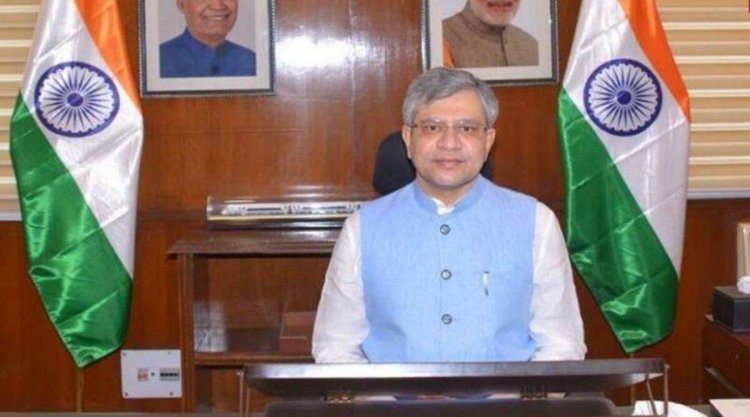Telecom department will not interfere in mobile manufacturing, says IT Minister Ashwani Vaishnaw
The report estimates demand for electronic products in India may stand at approximately USD 180 billion by 2025-26.

Communications and IT Minister Ashwani Vaishnaw on Monday said the telecom department will not interfere in matters related to mobile phone manufacturing.
His comments came amid the industry’s apprehensions that there could be heavy regulations if the Department of Telecom decides to control the mobile manufacturing activities.
“The telecom department is not going to enter mobile manufacturing at all. That regime is not going to change,” Vaishnaw said after the release of a vision document on electronics manufacturing.
At present, the Ministry of Electronics and IT is the nodal organisation to manage matters related to mobile manufacturing.
Vaishnaw also said that the government is also working on fine-tuning the labour laws to support hiring a large number of workforce by big companies and allowing residential facilities within the campuses of firms.
He said that housing within the campus is not allowed but asked mobile phone makers to give a location where the government can work and find out the laws that need to be fine-tuned to meet the industry requirements.
“PLI is a very successful method that has helped electronics manufacturing. Second way is to develop large format industrial zones. These are not SEZs. These are places where industry will be able to get plug and play kind of set-up. That is what we are working with the industry,” Vaishnaw said.
He said that the industry has demanded to enable provisions for setting up large factories which can hire 40,000 to 1 lakh workers.
“This requires a lot of change in the labour regulations. The labour minister is very positive on this. He feels that it is a very high doable thing. This is not something which requires major change in the legal framework. It is very much possible with administrative action,” the minister said.
He was addressing mobile manufacturers during the release of a vision document which states that electronics manufacturing can reach USD 300 billion by 2026 with pro-active support from the government.
The National Policy on Electronics (NPE) 2019 had set a target of achieving a turnover of USD 400 billion by 2025.
However, the industry will be unable to achieve the target set by NPE 2019, due to the adverse impact of COVID-19 pandemic on the sector, the report said, adding that “the COVID-19 pandemic brought with it unforeseen and unprecedented challenges”.
India Cellular and Electronics Association (ICEA) Chairman Pankaj Mohindroo while sharing the details of the report said that the reduced target still aims for a 400 per cent increase from the current level, which will require significant and persistent policy initiatives and efforts to create a conducive electronics manufacturing ecosystem.
He said that the government should not make any changes in the tax tariff without consultation with the industry.
Mohindroo said that there is a need to encourage domestic champions.
The report estimates demand for electronic products in India may stand at approximately USD 180 billion by 2025-26.
“If India is able to achieve the manufacturing target of USD 300 billion for electronics, the domestic market demand may be met in full by such manufacturing. This necessitates that USD 120 billion worth of electronic products would be required to be exported to the global market,” the report said.
Mohindroo said that the mobile phones are expected to contribute around USD 60 billion in the export target.
Ministry of Electronics and IT secretary Ajay Sawhney said that it is time to enter into new product segments like robotics, automation etc, to achieve the targets.
“Getting into a new product segment is very essential. It is a new segment that can take us to where we want to be. We should be planning for the globe,” Sawhney said.







